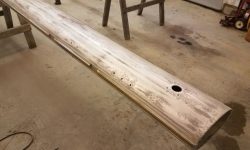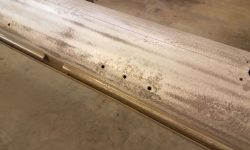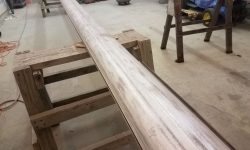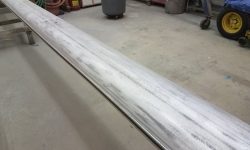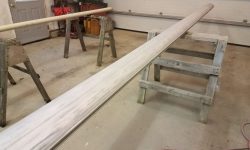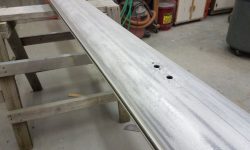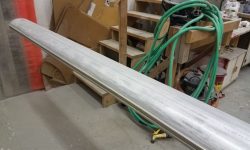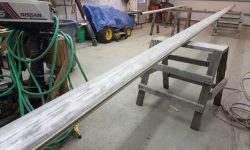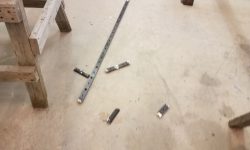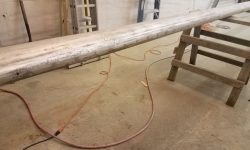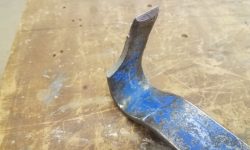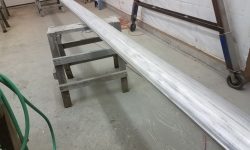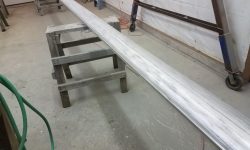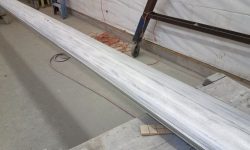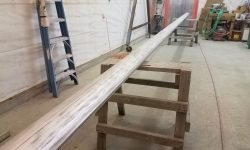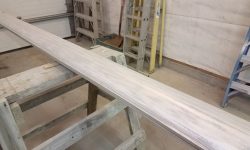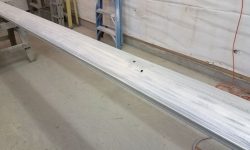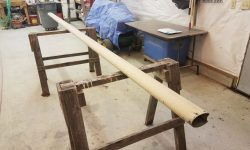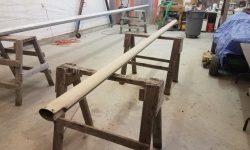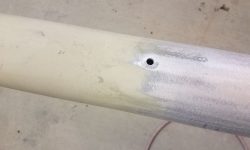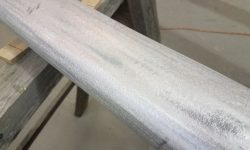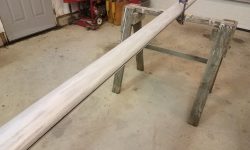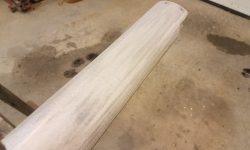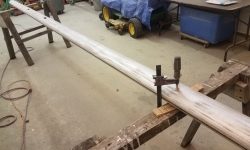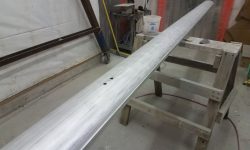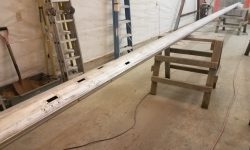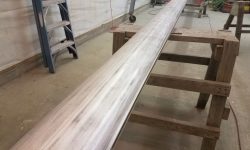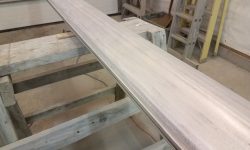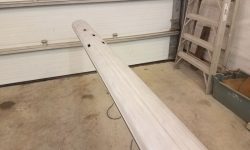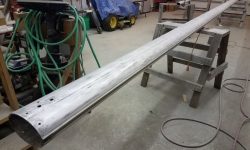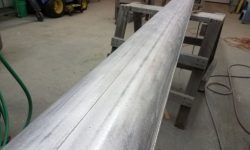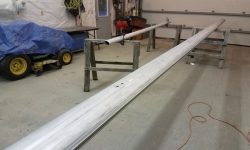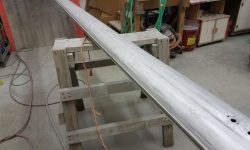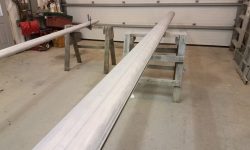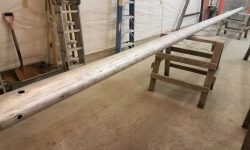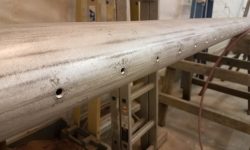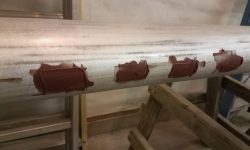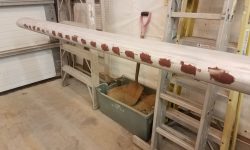December 27, 2019
Scupper 209
Friday
I spent the day preparing the mast and boom for primer and paint, beginning by stripping the old paint off the spars. To do this, I sanded with 40 grit discs, removing the old paint and primer and abrading the aluminum beneath. With the mast resting on saw horses, I worked my way down one side from masthead to base in this manner.
Once I’d reached the bottom part of the mast, I was faced with a decision. Despite repeatedly soaking for a couple weeks the six remaining bolts holding the spinnaker pole track to the mast, I had come no closer to removing them cleanly. In fact, they were so stuck in place, even with half a can’s worth of penetrating oil, that each time I tried to remove the screws, I simply shattered my driver bit in my impact gun. It was clear those bolts were not going to budge.
I seriously considered leaving the track in place and working around it for the paint, and almost certainly would have done so if I’d not been able to remove all but six of the screws. But it seemed so close to removal, and it would be better for the mast prep and paint if I could remove the track entirely–even though at this point it meant destroying the track–so eventually I decided to remove the track through whatever means.
Almost immediately, I rued this decision, as I found the track was extremely difficult to cut through, even though it was aluminum. It was a heavy, 1-1/4″ T-track that dated to the spar’s original construction. I tried grinding through the heads of the screws, but they were stainless steel and extraordinarily tough, and in any event the threads were still well welded in place through the aluminum track itself. I tried using the grinding wheel to cut through the track and screw studs, but this was difficult and dangerous, and I didn’t want to risk damaging the spar. I tried using a reciprocating saw, but again, the track was too difficult to cut through, and too time-consuming. Ultimately, I employed some combination of these techniques, along with a pry bar to bend and break away the track in sections, finally exposing each screw so I could then grind them flush. The track was tough enough that it broke the end off my flat pry bar that I was using to help bend and break the track at the cuts I’d made.
With the track successfully–finally–and cleanly removed, I turned the mast over and sanded off the paint from the other side. The spar was in good condition beneath the old paint, with some minor surface etching here and there where the old coating had failed long before.
Next, I turned to the boom, beginning by removing the end caps and remaining hardware. This was easy and quick since the riggers had already had these off in order to remove the bits of the old outhaul arrangement and plan for the replacement. Once the hardware was gone, I set to work sanding away the old paint and primer. Once I’d reached bare, white (silver) metal and finished the sanding with the 40 grit paper, I switched to 80 grit and sanded the entire boom again, to get closer to the final surface I’d need before applying the corrosion-resistant primer I planned to use. The bare aluminum would oxidize rather quickly, so I planned to finish the sanding with 120 grit on the day of the primer application, which would finish the spars’ preparation and clean the metal one last time just before the primer.
With the boom complete through 80 grit for now, I returned to the mast and sanded it with the 80 grit as well.
To round out the day, I decided to fill the old screw holes left from the spinnaker pole track, so I used a countersink to bore them out a bit, then, after cleaning with solvent, filled the holes with an epoxy mixture, choosing to leave the fill high in the hopes that I could do the job in one round only. The old bolt studs at the bottom of the track had ended up flush with the mast, but I applied some fairing compound over them as well, just because.
Total time billed on this job today: 6.25 hours
0600 Weather Observation: 28°, light freezing rain. Forecast for the day: Freezing rain and sleet, then rain, 37°



